Cudillero – Ortigueira
CHARACTERISTICS
- Estación de Ortigueira (UTM 29T 592726 4837671); (P.K. 52,500) / VM
- Estación de Vivero (UTM 29T 612873 4834727); (P.K. 85,900) / VM
- Estación de Jove (UTM 29T 621267 4837551); (P.K. 99,000) / VM
- Estación de Burela (UTM 29T 632182 4835430); (P.K. 112,700) / VM
- Estación de Ribadeo (UTM 29T 657100 4822179); (P.K. 146,300) / VM
- Estación de Navia (UTM 29T 684215 4822926); (P.K. 189,600) / VM
- Estación de Luarca (UTM 29T 699024 4823504); (P.K. 211,400) / VM
- Estación de Soto de Luiña (UTM 29T 723374 4826684); (P.K. 242,400) / VM
- Estación de Cudillero (UTM 29T 730041 4825936); (P.K. 255,900) / VM
The section between Cudillero and Ortigueira belongs to the 740 metre wide railway line that runs between Ferrol and Gijón. Currently, both ends of this line are integrated into commuter networks: between the stations of Gijón and Cudillero it belongs to the C-4 line of Cercanías de Asturias and between the stations of Ferrol and Ortigueira it belongs to the C-1 line of Cercanías Ferrol-Ortigueira.
In 1886, the Spanish Congress of Deputies approved the first proposal to build a railway line between Ferrol and Gijón, the main objective of which was to link the artillery barracks in Ferrol with the arms and explosives factories in Asturias, overcoming the challenges of the rugged orography of the Cantabrian coast. The line was included in the Secondary Railways Plan of 1888, but the project was not developed. [1]
[...] a railway line between Ferrol and Gijón, whose main objective was to link the artillery barracks in Ferrol with the arms and explosives factories in Asturias [...]
In 1906 the Law of Strategic and Secondary Railways was passed, in which the Ferrol-Gijón project was once again considered. However, the lack of agreement on the route, especially in the western part of Asturias, delayed the start of construction until 1921, under state responsibility. [1] [2] Political instability in the following decades meant that the first section between Avilés and Pravia was not inaugurated until 1953, following an agreement with the company that operated the Carreño Railway and had the concession between Avilés and Gijón.
Political instability in the following decades meant that the first section between Avilés and Pravia was not inaugurated until 1953 [...]
Construction work continued in Galicia, where the last section in the region, Vivero-Vegadeo, was inaugurated in 1968. In Asturias, the Pravia-Luarca section was completed in 1962 and ten years later, in 1972, work would be completed and the line would be fully opened with the commissioning of the Luarca-Vegadeo section. [1]
From the approval of the first project in 1886 until its inauguration in 1972, 86 years passed, meaning that the original reasons for its construction, both in terms of general and strategic traffic, had become outdated. [3]
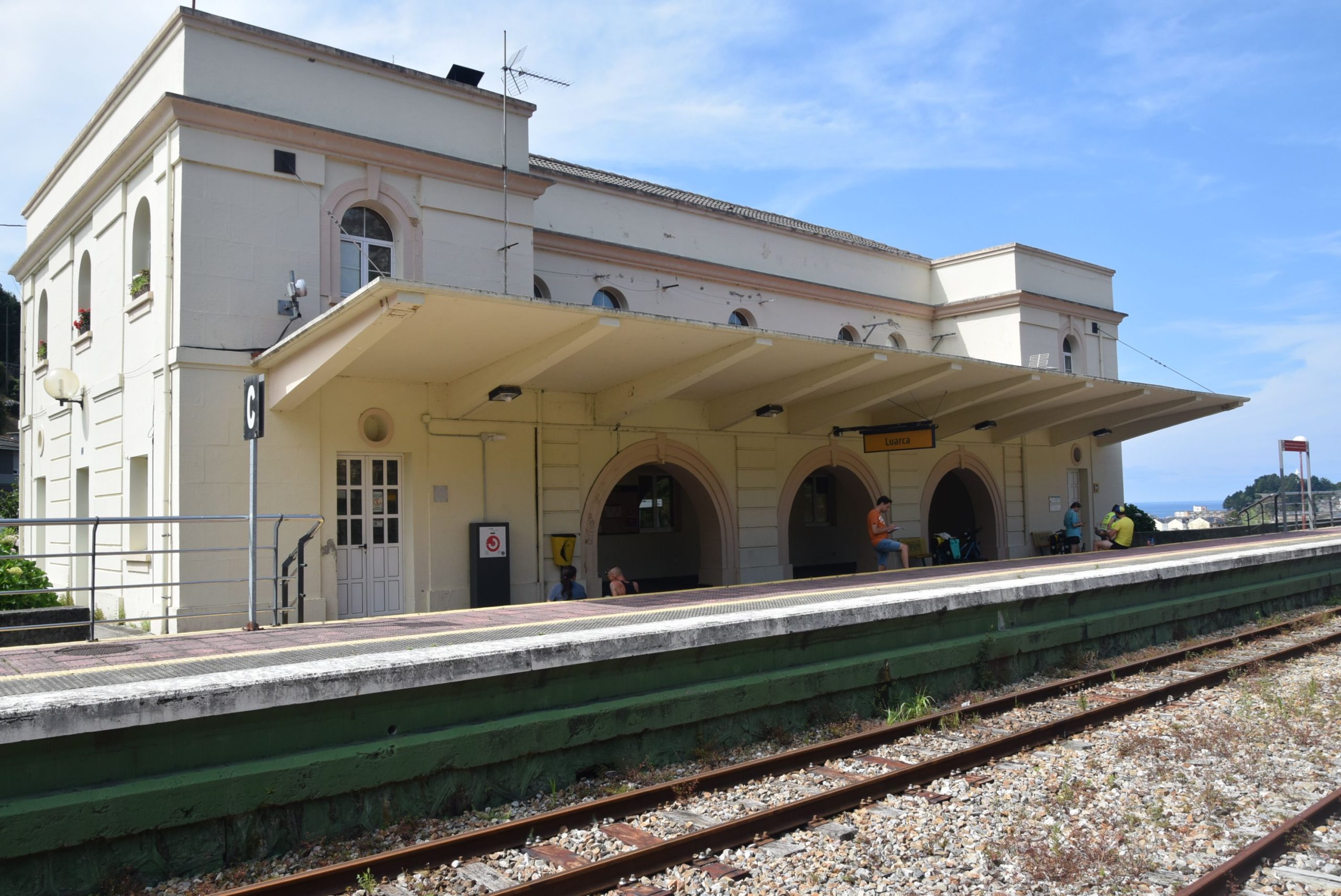
Estación de Luarca (Asturias)
The construction of this railway line involved the creation of major infrastructure to adapt the route to the difficult coastal terrain through which it ran, especially in Asturias. A total of 110 tunnels and 27 viaducts were built along a 320 km stretch, which had 47 stations. [1]
Ferrocarriles Españoles de Vía Estrecha (FEVE) was the operator of the line until December 2012, when the state-owned narrow-gauge and broad-gauge railways were merged. At that time, the infrastructure was transferred to Adif and the operation of the services to Renfe Operadora. [4]
The Spanish Narrow-Gauge Railway, FEVE, was the operator of the line until December 2012 [...]
In 2024, two regional diesel trains will run daily in each direction between Cudillero and Ortigueira, taking around four and a half hours.
The line has great potential for tourism due to the natural, cultural and gastronomic wealth of the territory it crosses. Practically the whole of its route runs parallel to the Cantabrian coast, providing an interesting scenic route. The stretches of greatest scenic interest coincide with the viaducts over estuaries, such as the Foz and Ribadeo, or the crossing over the river Sor, where spectacular views of the coast can be seen. Another point of interest is the famous beach of As Catedrais, just 300 metres from the line and accessible from the Esteiro halt.
Another point of interest is the famous beach of Las Catedrales, just 300 metres from the line [...]
Most of the route runs through rural areas with a low population density, where there is an abundance of pastureland and occasionally forest areas are crossed. However, outside the main towns in the region, it is relatively common for the train to travel along cleared sections of track, so visibility for passengers can be somewhat reduced. The line has the great attraction of linking some towns of notable tourist interest such as Cudillero or Luarca, although in most of them the station is relatively far from the historic centre. The buildings of the existing stations, generally of little architectural value, are mostly closed at present.
Category C1.
Non-electrified track with wooden sleepers in need of repair.
Photographic report
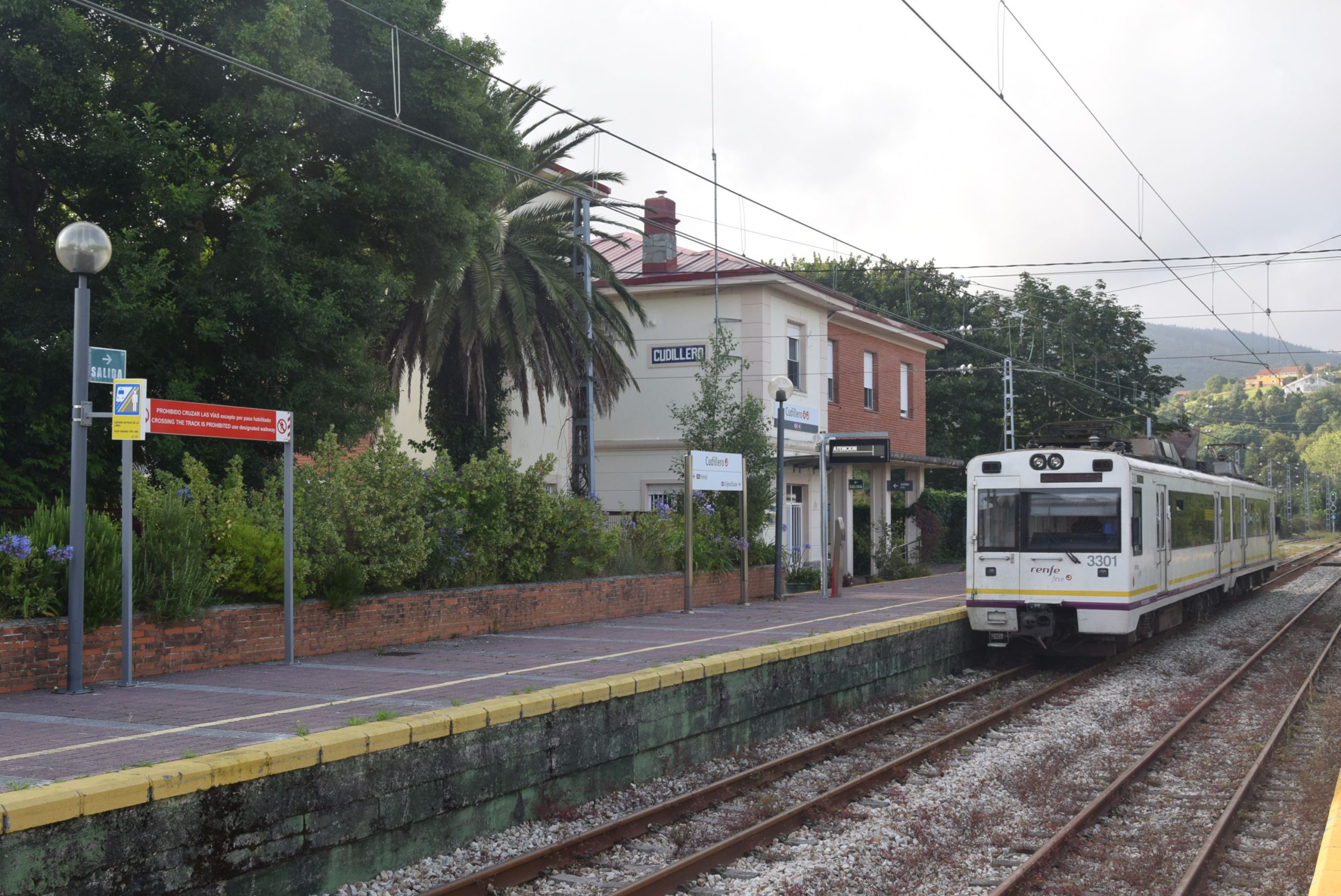
Estación de Cudillero (Asturias)
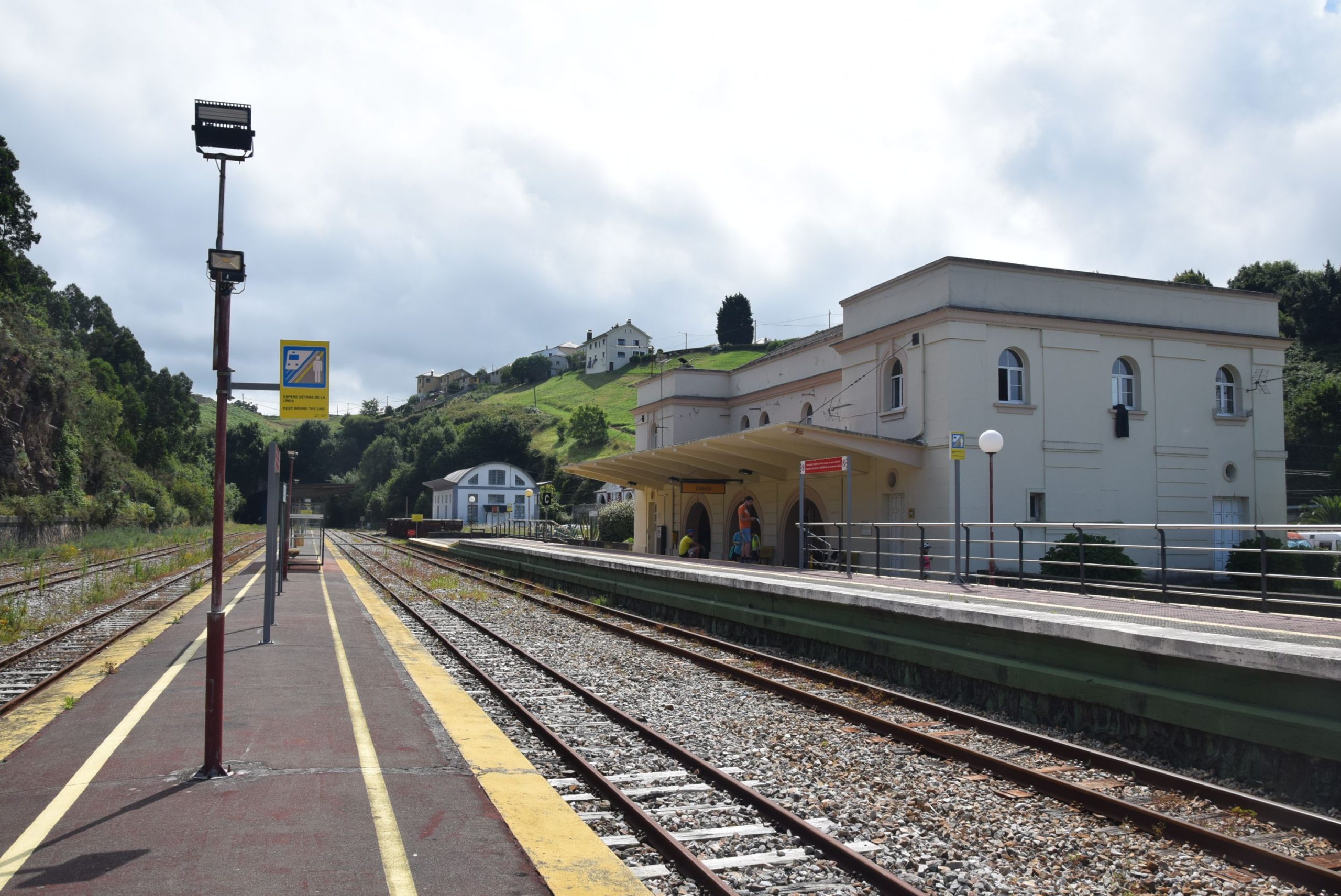
Estación de Luarca (Asturias)
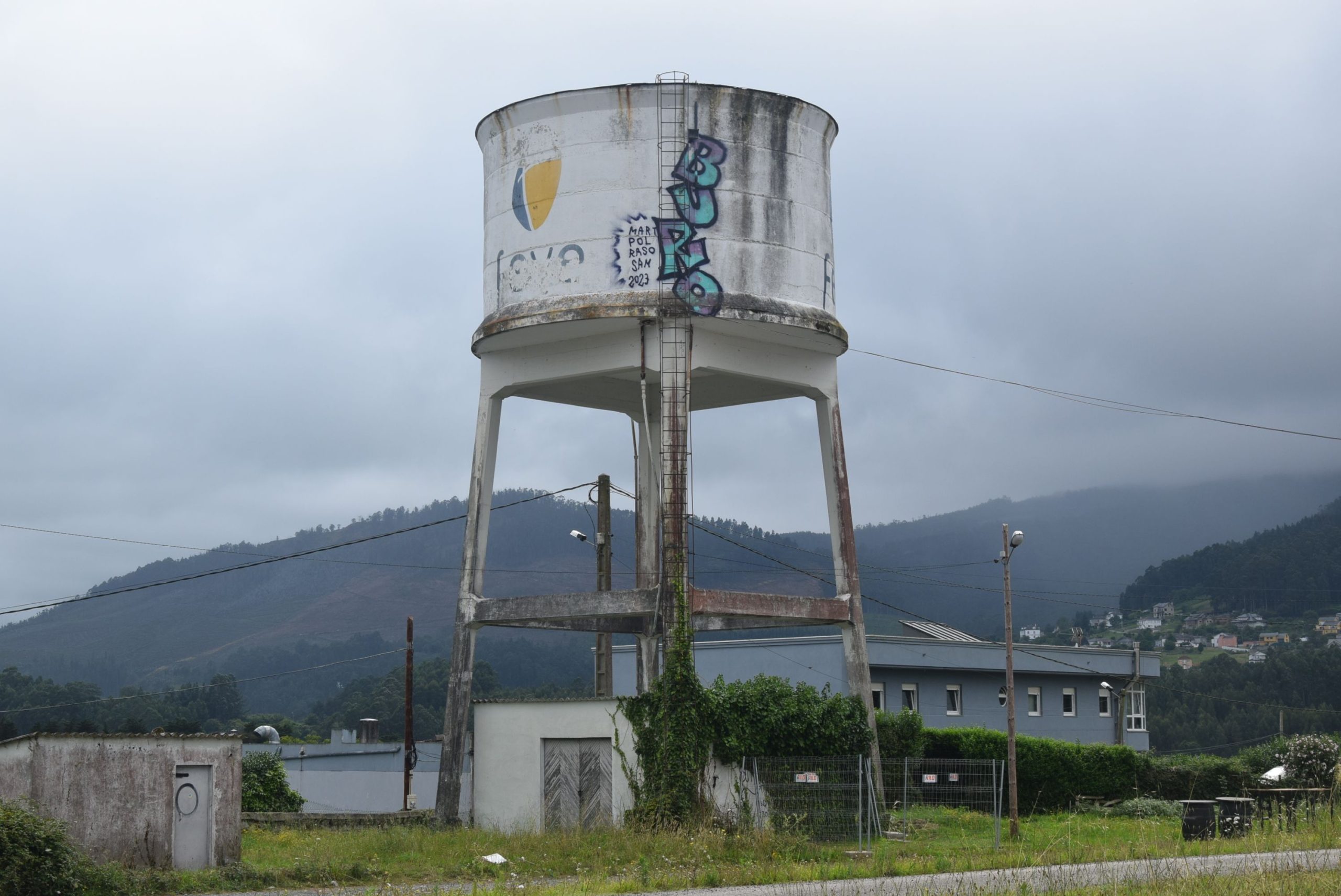
Depósito en la Estación de Viveiro (Lugo)
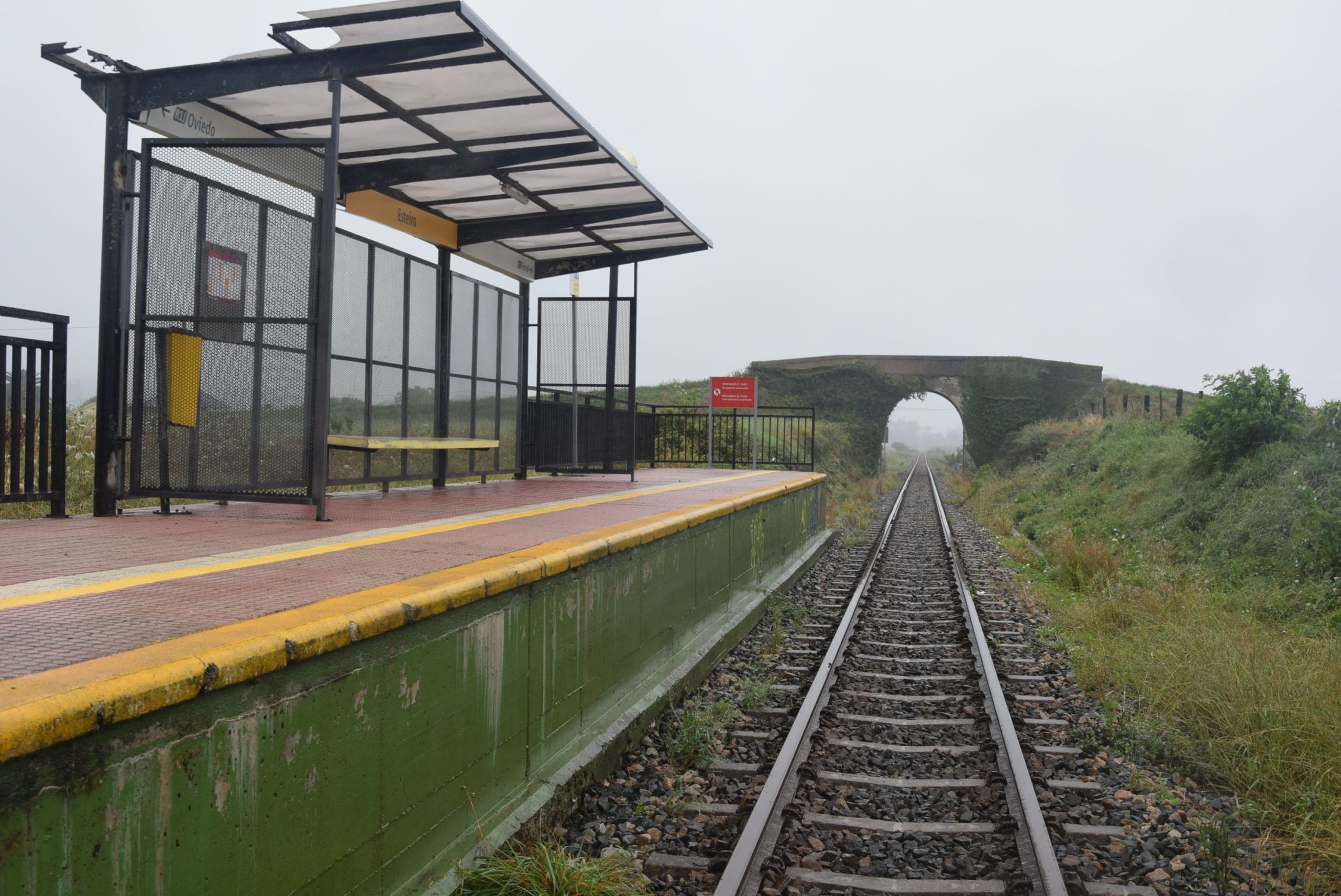
Apeadero de Esteiros (A Coruña)
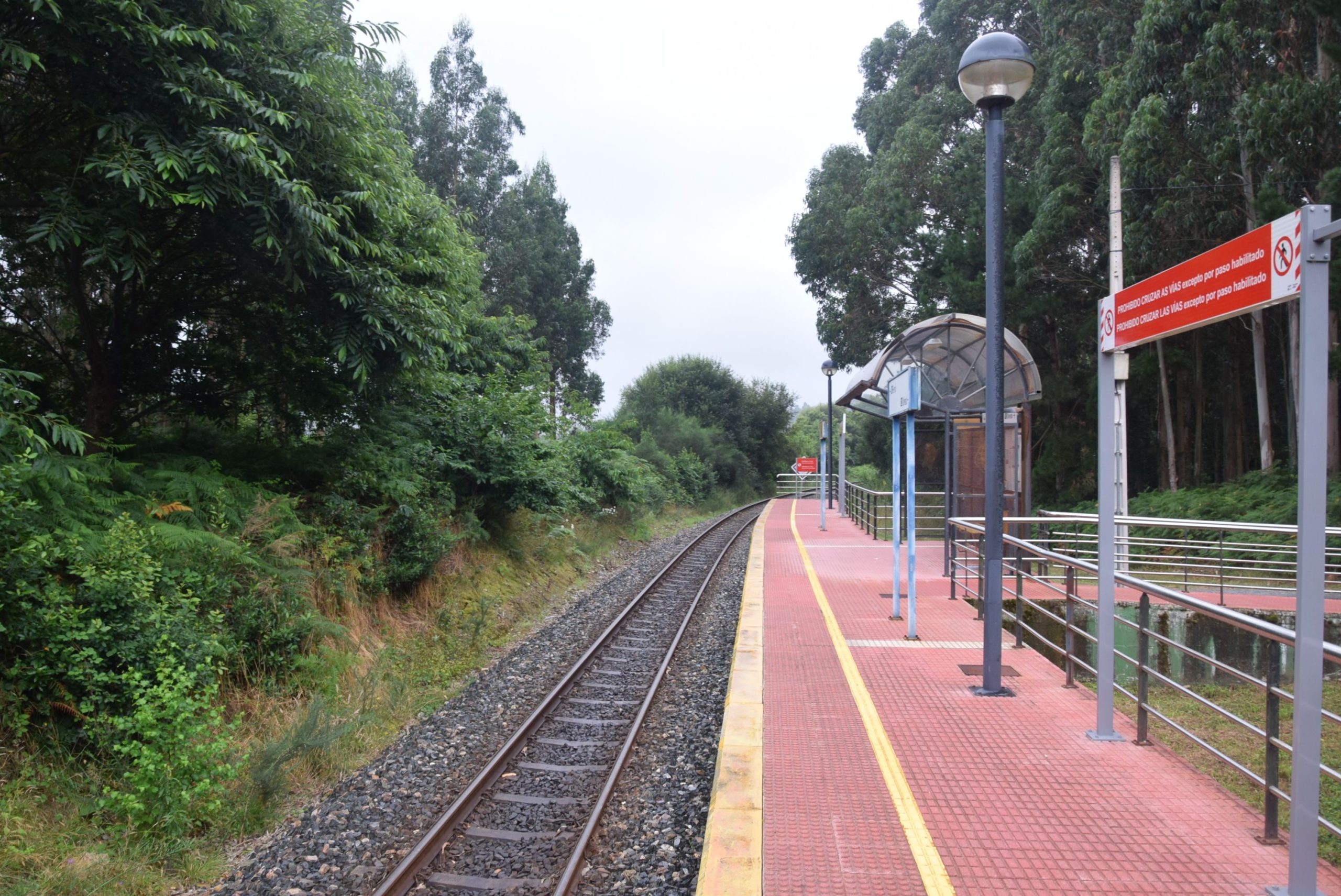
Apeadero de Loiba (A Coruña)
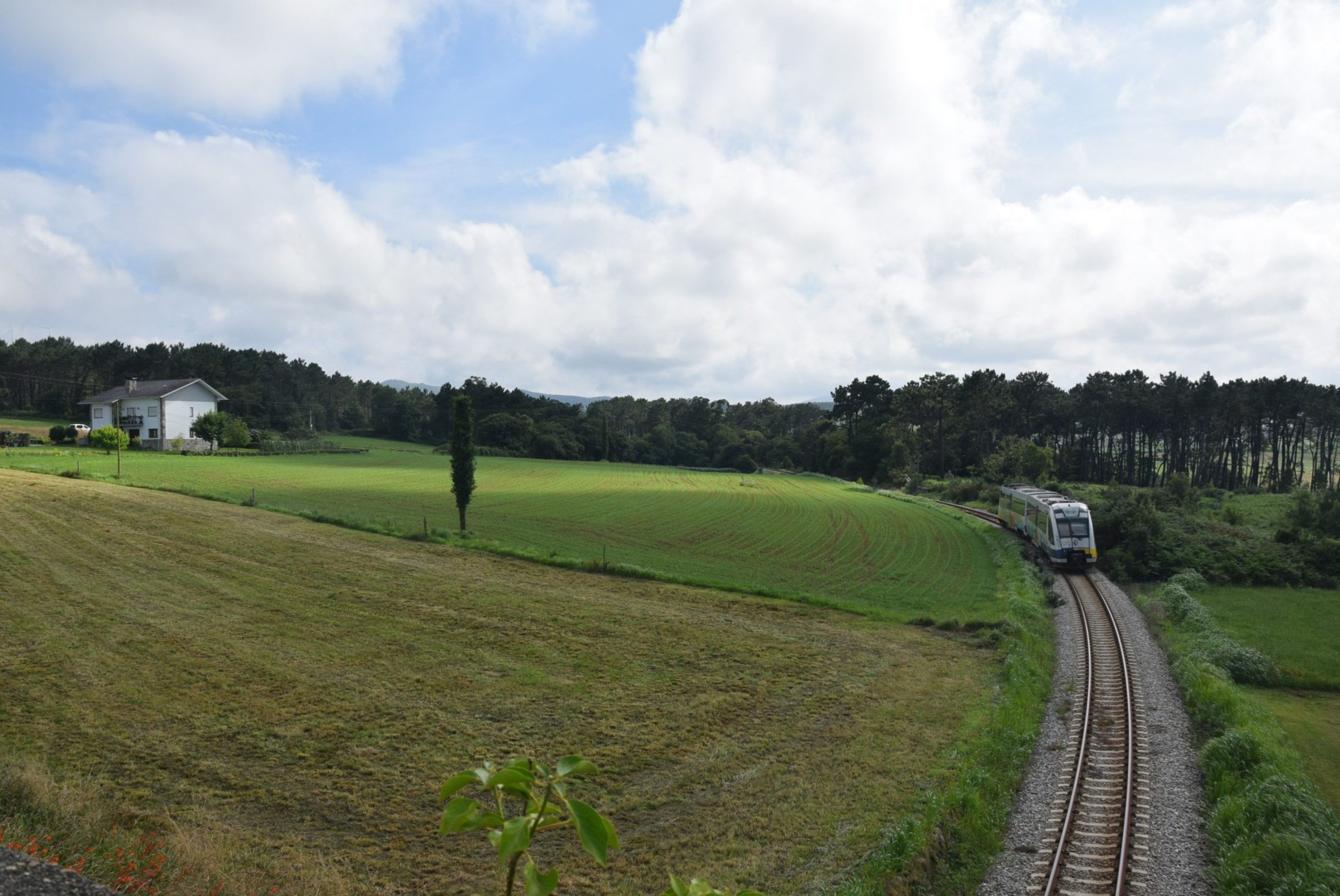
Línea 740
References
-
«Ferrocarril estratégico de Ferrol a Gijón», Grupo de Trabajos Ferroviarios, 2001. [En línea]. Ver referencia
-
J. Granda, «El ferrocarril de Ferrol a Gijón», La Nueva España, 22-nov-2008. [En línea]. Ver referencia
-
J. F. López, «Los ferrocarriles de vía estrecha de Asturias», El Comercio: Diario de Asturias, 26-abr-2010. [En línea]. Ver referencia
-
Europa press turismo, «FEVE se integra en Renfe y Adif», europa press turismo, 02-ene-2013. [En línea]. Ver referencia